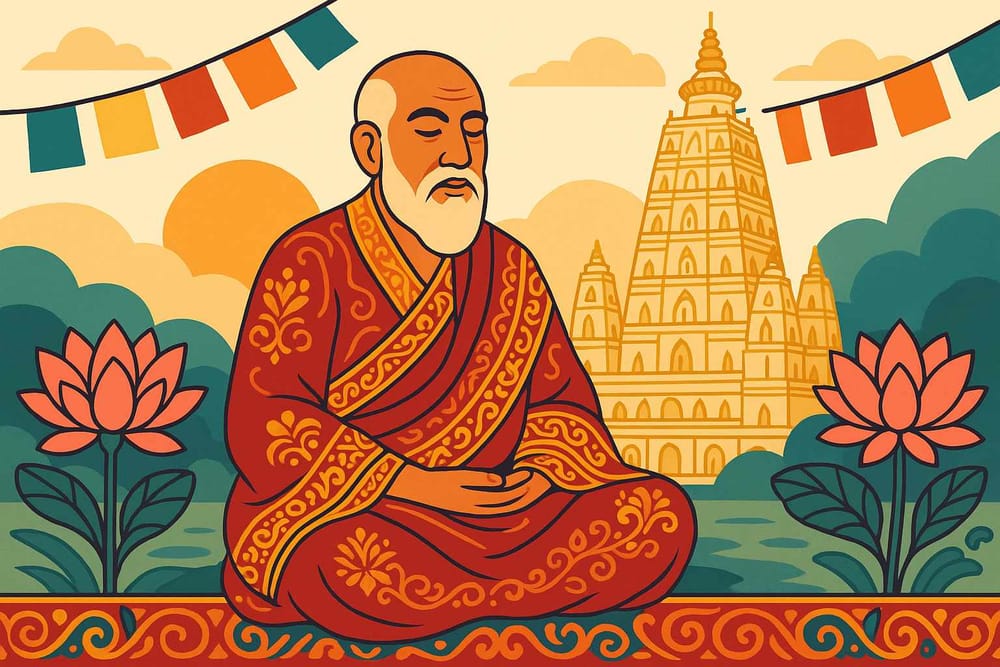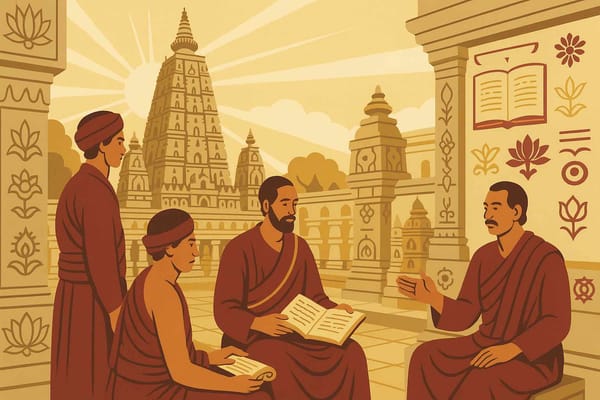
Exploring the Pithipatis of Bodh Gaya- History and Culture
Imagine standing in Bodh Gaya. The air hums with a quiet energy, a mix of hushed chants and the rustle of leaves from the ancient Bodhi Tree. It’s a place where time seems to slow down, where every stone and every prayer flag tells a story. We all know this is where Prince Siddhartha became the Buddha, the Enlightened One. But have you ever wondered who looked after this sacred space through centuries of change, turmoil, and fading memories? Who kept the flame of faith alive? The answer lies with the unsung guardians of this holy ground: the Pithipatis.
Who Exactly Were the Pithipatis?
You might be asking, what does 'Pithipati' even mean? The name itself is a beautiful story, woven from two Sanskrit words: 'Pithi', meaning the sacred seat or throne, and 'Pati', meaning lord or master. They were the 'Lords of the Sacred Seat'—specifically, the Vajrasana, the Diamond Throne, the very spot where Lord Buddha attained enlightenment. Their story isn't just one of kings and kingdoms; it’s a deeply personal tale of devotion and responsibility passed down through generations.
These were not just rulers; they were chieftains who rose from being religious authorities and priests to become the protectors of the Magadha region, primarily Bodh Gaya, from around the 11th to the 13th centuries. They were the living thread that connected the glorious past of the Pala Empire to the turbulent centuries that followed.
A Journey Back in Time: The Story of Their Rise and Rule
The history of the Pithipatis is like discovering a hidden chapter in our rich Indian history books. Their journey is fascinating, full of alliances, devotion, and incredible resilience.
From Priests to Protectors under the Pala Empire
The story begins during the reign of the great Pala dynasty. The Pithipatis started as local religious figures, respected for their wisdom and knowledge. As the central power of the Palas began to shift, these local leaders stepped up. They took on political roles, ensuring that Bodh Gaya, a global centre for Buddhist learning, remained protected. Their power was not seized; it grew organically from a sense of duty.
The Kings, Clans, and their Kingdom
Historical records, like the Sarnath inscription of Queen Kumaradevi, give us a glimpse into their world.
- The first known king was Vallabharāja, a man who carved out a base in Bodh Gaya. He wasn't just a local chieftain; he was a significant figure whose niece, Queen Kumaradevi, was married into the powerful Gahadavala dynasty of Kannauj. This shows the Pithipatis were well-connected and respected across Northern India.
- Inscriptions tell us of their clan names, like Chinda and Chikkora, rooting their identity deep into the soil of Magadha. They weren't just Pithipatis; they were also known by the grand title of 'magadhādipati'—ruler of Magadha. This wasn't just a title; it was a declaration of their responsibility for this historically and spiritually charged land.
Navigating a World of Change
The Pithipatis ruled during a time of great change. They were positioned between the mighty Gahadavalas to their west and the fading Pala and then Sena empires to their east. They managed their internal affairs with wisdom, even while showing nominal allegiance to the larger empires. Their resilience was truly tested during the Turkic invasions when rulers like Acarya Buddhasena had to make difficult choices to protect their people and their sacred sites.
The Heart of Their Duty: Guardians of Faith and Culture
Being a Pithipati was more than just ruling a piece of land. It was a sacred trust, a dharma they had to uphold. They were the caretakers who ensured the soul of Bodh Gaya continued to shine brightly for pilgrims from all over the world.
- Upholding Sacred Rituals: The Pithipatis were instrumental in organizing daily prayers, leading vibrant processions during festivals like Buddha Purnima, and ensuring that the ancient meditation and chanting techniques were passed on to new monks. They were the guides who could explain the deep spiritual meaning behind every corner of the Mahabodhi temple.
- A Haven for Global Pilgrims: Their generosity was legendary. Inscriptions speak of how Pithipati chiefs would grant land to visiting monks, especially from Sri Lanka, to build their monasteries. They fostered a truly international spiritual community, making Bodh Gaya a welcoming home for all seekers of truth.
- Protecting Sacred Treasures: Their most visible duty was the protection of the Mahabodhi Temple and the revered Bodhi Tree. But their role went deeper. Recent studies and archaeological finds hint at a vast, buried heritage beneath the temple complex. It makes you wonder if the Pithipatis were guardians of not just what we see, but a much larger sacred geography that is yet to be fully uncovered. They were the protectors of relics, artifacts, and perhaps even lost knowledge.
This deep connection between a place and its protectors is a beautiful aspect of India's sacred geography, where faith is etched into the very landscape.
The Living Legacy of the Pithipatis
So, why is it important for us to remember the Pithipatis today? Because they represent the seamless blend of faith and responsibility. In a land as diverse as ours, they helped foster a beautiful harmony between Buddhist and local Hindu traditions, enriching the cultural fabric of the region. Their legacy is not just in stone inscriptions but in the unbroken chain of devotion that still thrives in Bodh Gaya. They teach us that true preservation comes from the heart, from a deep-seated love for one's heritage.
Stories like these, of forgotten heroes and timeless traditions, are what we at Bhaktilipi are passionate about sharing. We believe that understanding our past is the best way to enrich our present. Bhaktilipi is a space where you can explore the depths of India's spiritual heritage, from the grand tales of our epics to the heartfelt stories of local guardians like the Pithipatis.
Join our community and continue this journey of discovery. Stay connected with us for more such inspiring stories. Subscribe to our YouTube channel, follow us on Instagram, and become a part of our family on Facebook. Let's explore the path of Bhakti, together.
A Timeless Connection to Our Roots
The next time you think of Bodh Gaya, look beyond the magnificent temple. Think of the centuries of devotion poured into that soil by the Pithipatis. They are a powerful reminder that our holiest sites are not just monuments; they are living, breathing spaces nurtured by generations of unwavering faith. Their story inspires us to be guardians in our own right—of our traditions, our values, and our own spiritual selves.
A passionate group of people dedicated to preserving India's knowledge of Dharma, Karma, and Bhakti for ourselves and the world 🙏.
Related in

Exploring the Historical Significance of the Pithipatis of Bodh Gaya: A 2025 Analysis
Have you ever stood on sacred ground and felt the weight of centuries settle upon you? In Bodh Gaya, under the gentle shade of the Bodhi Tree, this feeling is profound. It’s the place where a prince became the Buddha, where enlightenment itself touched the earth. We all know
